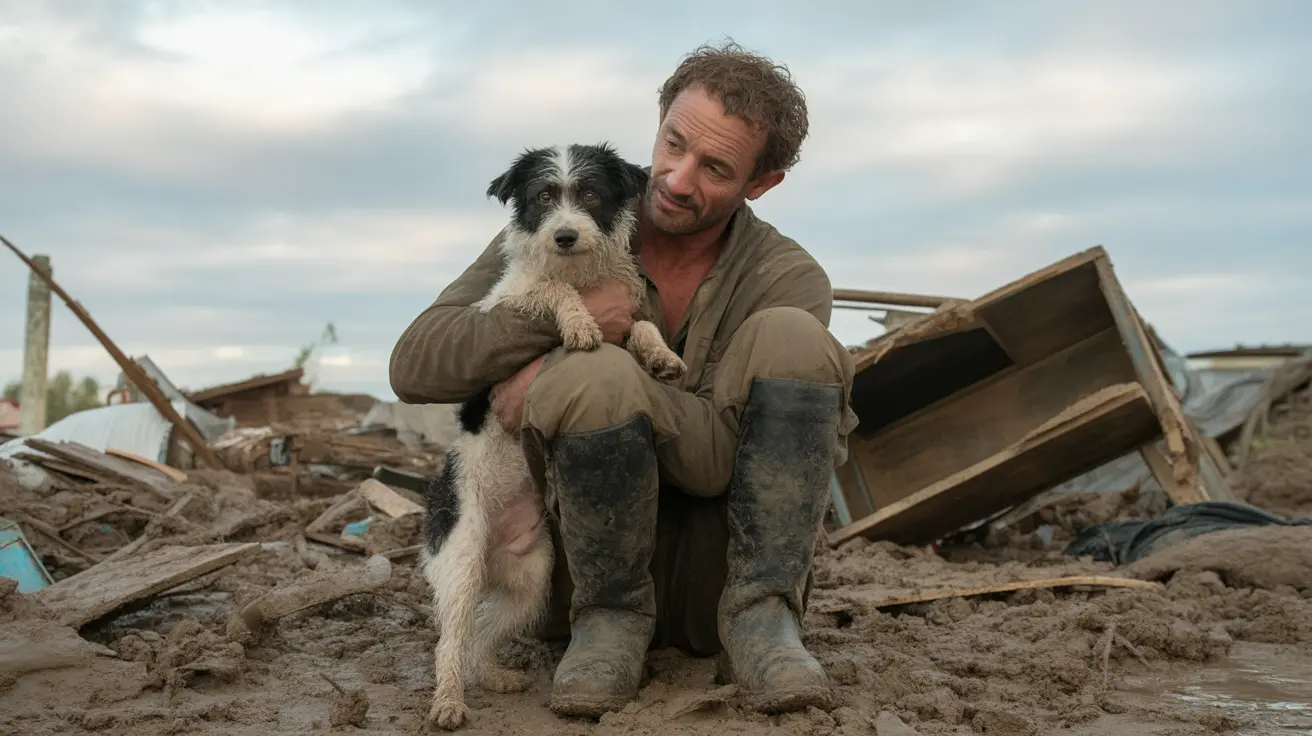When natural disasters strike, pets and wildlife often become forgotten victims of catastrophic events. Recent emergency responses across Mexico, Alaska, and the Caribbean highlight the critical importance of coordinated animal rescue disaster operations during extreme weather events. As communities face increasingly severe floods, hurricanes, and typhoons, professional animal rescue teams are working tirelessly to protect vulnerable animals while supporting overwhelmed local communities.
The Humane World for Animals organization has been at the forefront of these international disaster response efforts, deploying specialized teams across three distinct crisis zones simultaneously. Their work demonstrates how professional veterinary disaster response can make the difference between life and death for countless animals during natural emergencies.
Mexico Flooding Animal Aid in Veracruz Region
In mid-October, record-breaking rainfall devastated Veracruz and surrounding regions in Mexico, creating widespread flooding that left entire communities underwater. The Humane World for Animals Mexico team found themselves wading through contaminated floodwaters coursing through streets, providing critical flood relief for pets and their families.
These emergency operations in Mexico underscore the particular challenges of providing animal care during flood disasters. Contaminated waters pose significant health risks to both animals and rescue workers, while displaced families often struggle to keep their pets safe during evacuations.
Health Risks from Infected Floodwaters
The contaminated waters in Veracruz presented serious health threats, particularly the risk of leptospirosis in pets after flood exposure. This zoonotic disease spreads through contact with infected water or animals, making immediate veterinary care essential for pets exposed to floodwaters contaminated with mud and sewage.
Alaska Typhoon Animal Rescue Operations
Simultaneously, disaster response director Gaia Bonini was completing deployment to remote western Alaska, where typhoon-related flooding had devastated entire communities. The Alaska typhoon animal rescue efforts required specialized logistics due to the remote location and harsh conditions, demonstrating the complexity of delivering veterinary disaster response to isolated areas.
These Alaska operations highlight unique challenges faced during disaster response in remote regions, where traditional supply chains and communication networks may be completely disrupted.
Caribbean Hurricane Animal Shelter Support
As teams worked in Mexico and Alaska, Hurricane Melissa was setting records in the Caribbean, creating unprecedented challenges for local animal shelters and pet owners. The Caribbean hurricane animal shelter operations required rapid planning and coordination to address the needs of displaced animals and overwhelmed local facilities.
Animal Shelter Power Outage Challenges
Extended power outages following Hurricane Melissa created particular difficulties for animal care facilities in Jamaica and other affected areas. These disruptions complicated refrigeration of medicines, limited water supply, and hindered basic shelter operations needed for feeding, treating, and housing displaced animals.
Emergency Pet Food Distribution and Critical Supplies
Across all three disaster zones, emergency pet food distribution became a critical component of relief efforts. When human communities struggle to access basic necessities, pet food and animal supplies often become even scarcer, leaving families forced to make difficult choices about their beloved animals.
Professional disaster response teams coordinate with local authorities and international organizations to ensure consistent supply chains for animal food, clean water, medications, and temporary shelter materials.
Climate Change Impact on Pet Preparedness
These simultaneous disasters across different continents illustrate the growing impact of climate change on natural disasters and their effects on pets and wildlife. Pet owners must increasingly prepare for more frequent and severe weather events that can displace families and separate them from their animals.
Effective pet preparedness for floods includes creating evacuation plans, assembling emergency supply kits, and identifying pet-friendly shelters or boarding facilities that can accommodate animals during extended displacement periods.
Frequently Asked Questions
- How can pet owners prepare their animals for severe flooding and hurricanes? Pet owners should create emergency plans that include safe evacuation routes, assembling pet survival kits with food, water, and medical supplies, and identifying nearby shelters that accept animals, as demonstrated in disaster responses across Mexico, Alaska, and the Caribbean.
- What are the common health risks to pets after floodwaters recede? Floodwaters contaminated with mud and sewage can expose pets to diseases like leptospirosis, a zoonotic illness that spreads through contact with infected water or animals, making veterinary care and vaccinations crucial post-disaster.
- What types of emergency aid do animal rescue teams provide during natural disasters? Animal rescue teams typically deliver veterinary care, distribute food and clean water, provide shelter or evacuation for displaced animals, and coordinate with local authorities to protect at-risk pets and wildlife, as demonstrated in recent Mexico, Alaska, and Caribbean relief efforts.
- How do power outages after hurricanes affect animal care and rescue operations? Extended power outages complicate animal care by disrupting refrigeration of medicines, limiting water supply, and hindering shelter operations, causing challenges in feeding, treating, and sheltering animals during prolonged disaster aftermaths like Hurricane Melissa in Jamaica.
- Why is protecting animals important for public health during and after natural disasters? Sick or displaced animals can become vectors for diseases that threaten both animal and human populations, so integrated animal welfare interventions help prevent outbreaks, ensure community safety, and support overall disaster recovery efforts.
The coordinated international response across Mexico, Alaska, and the Caribbean demonstrates that effective animal rescue disaster operations require specialized expertise, rapid deployment capabilities, and strong partnerships with local communities. As extreme weather events become more frequent and severe, these professional response models provide essential blueprints for protecting animals and supporting pet-owning families during their most vulnerable moments.






